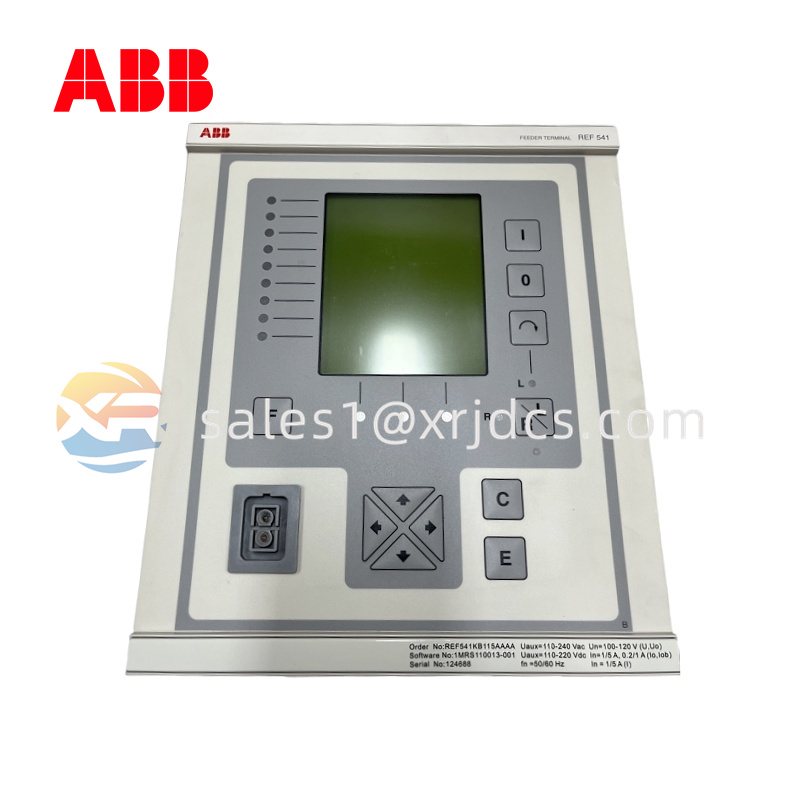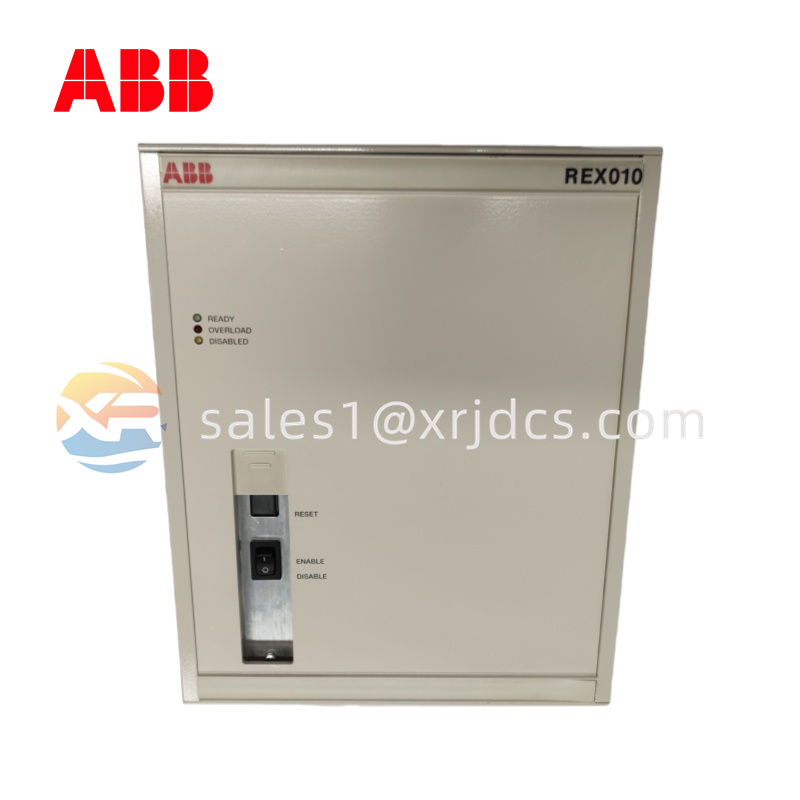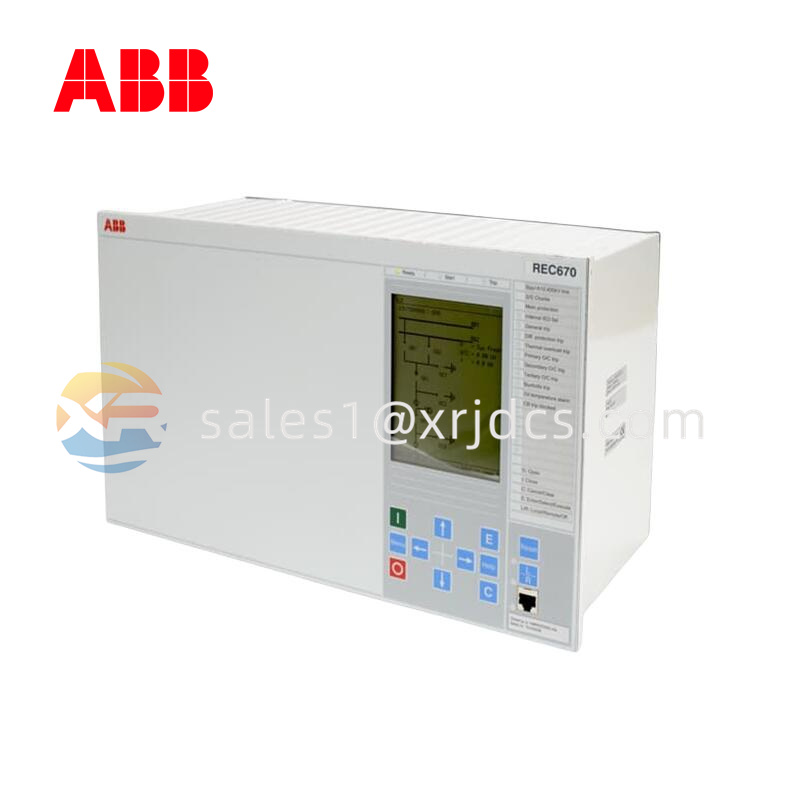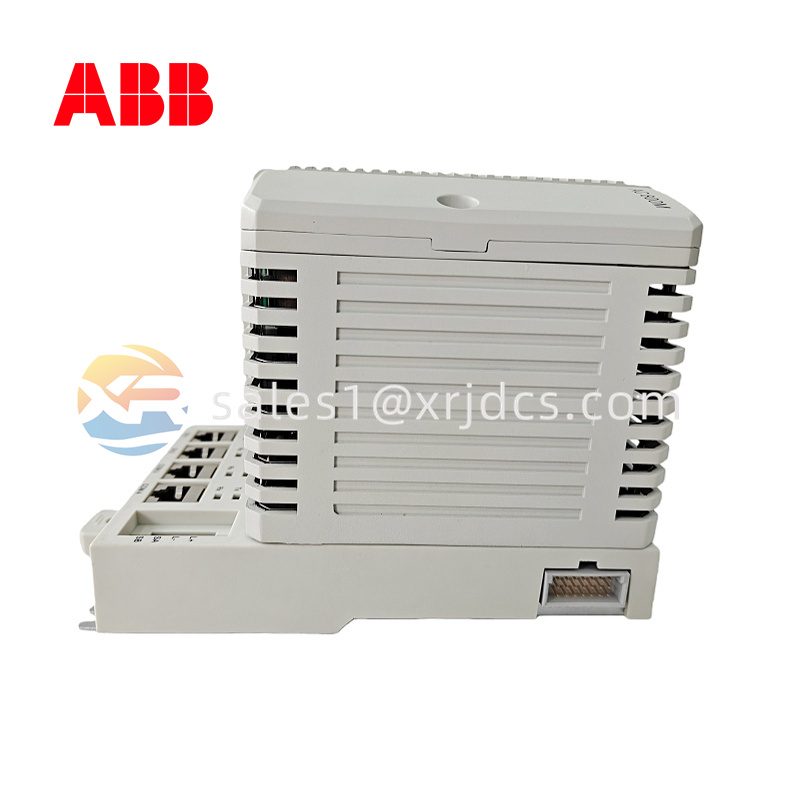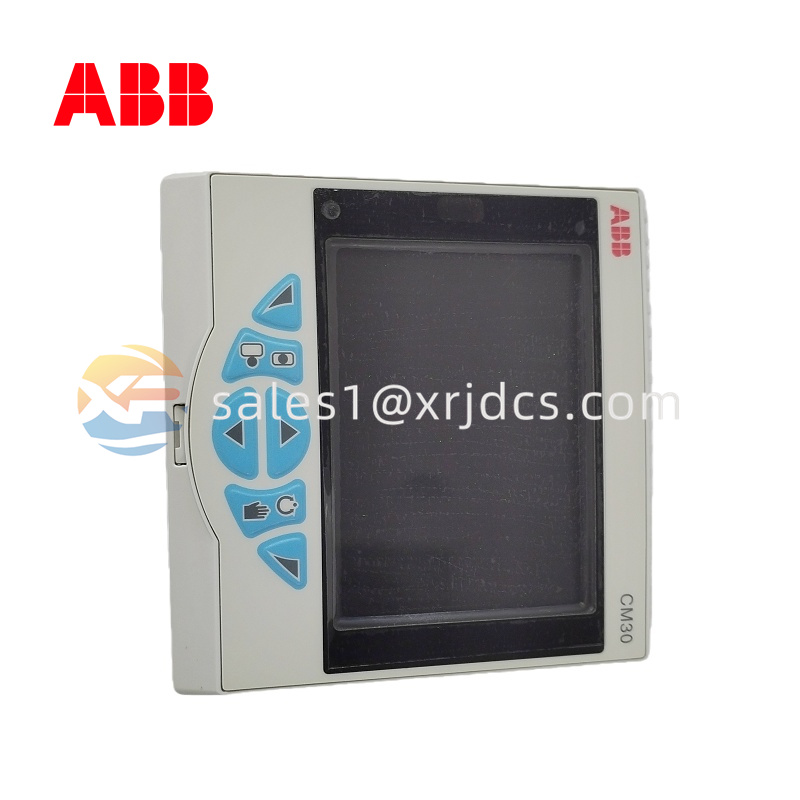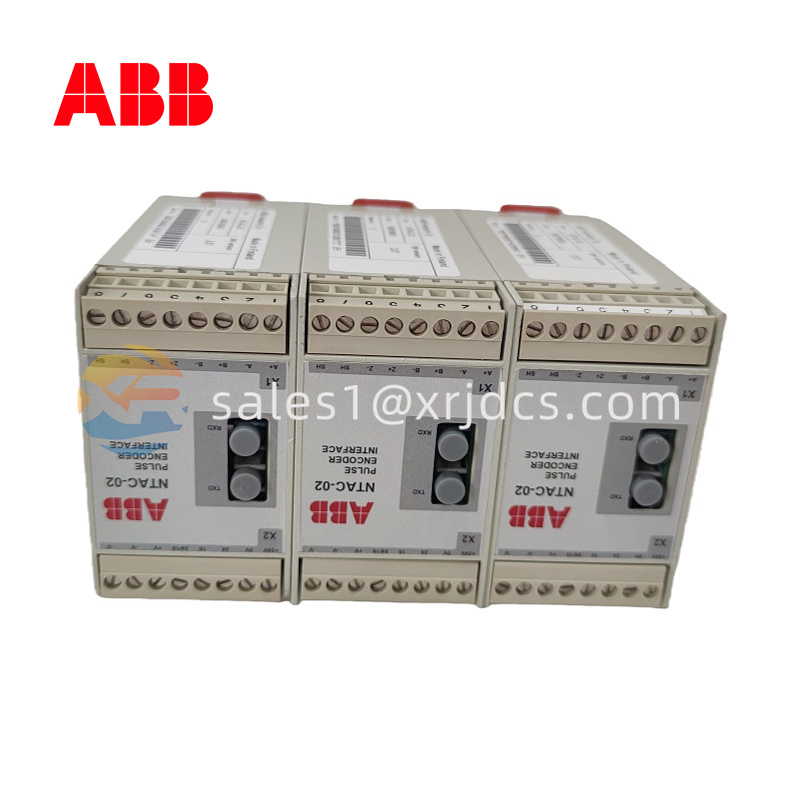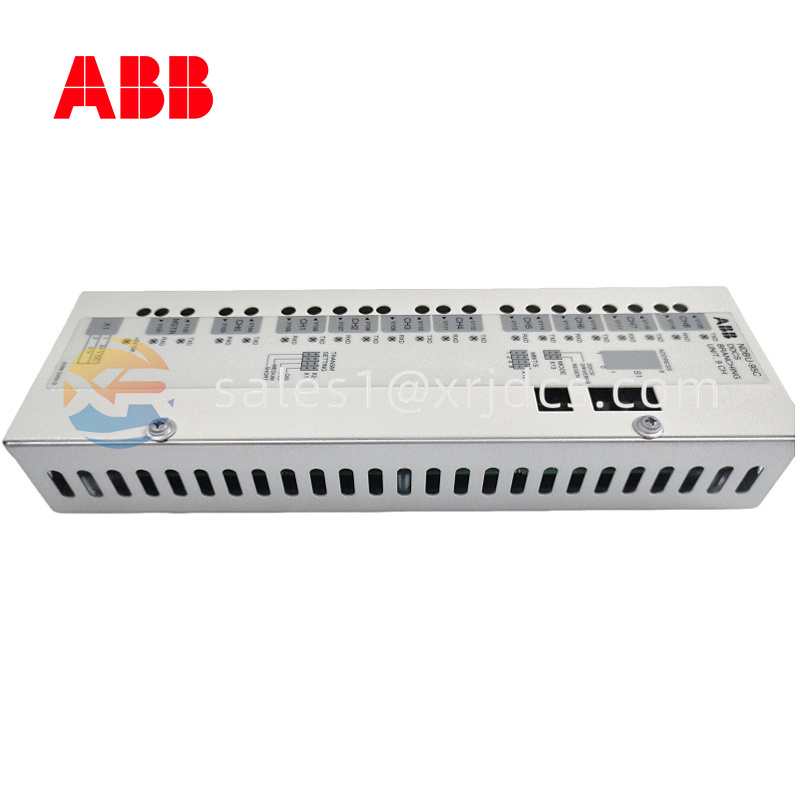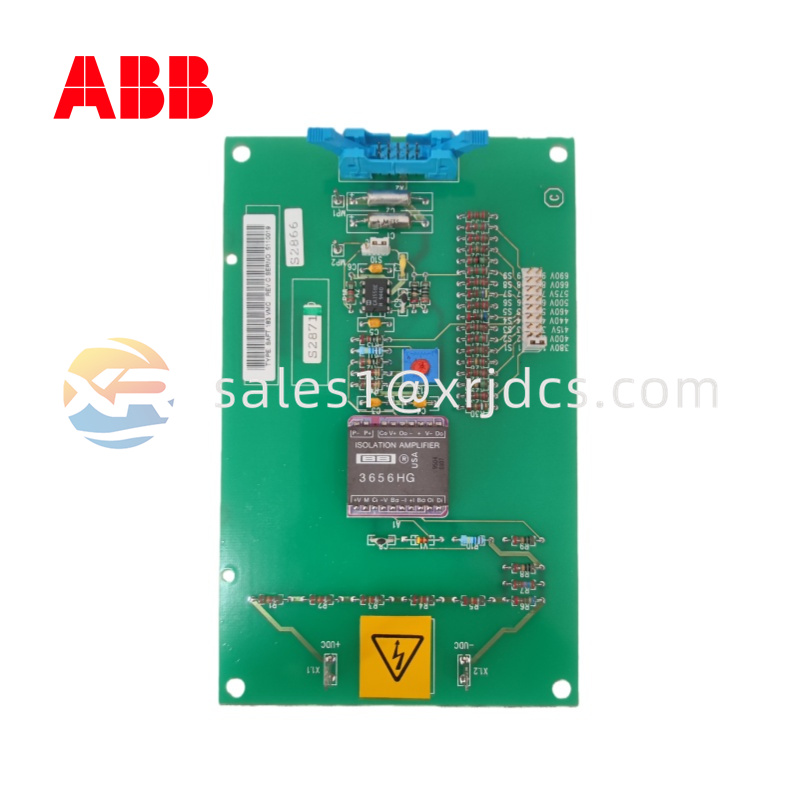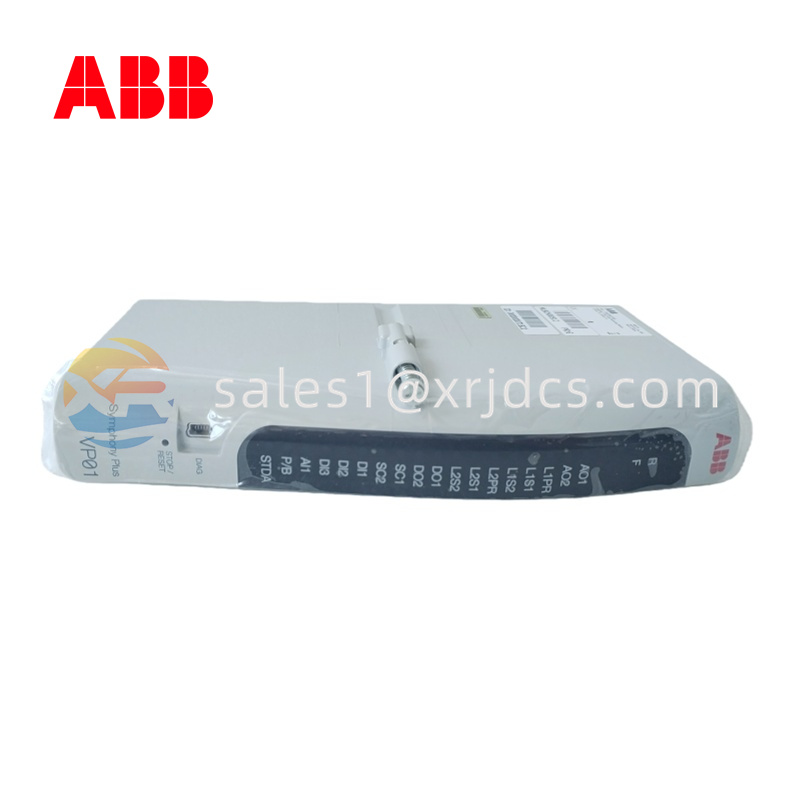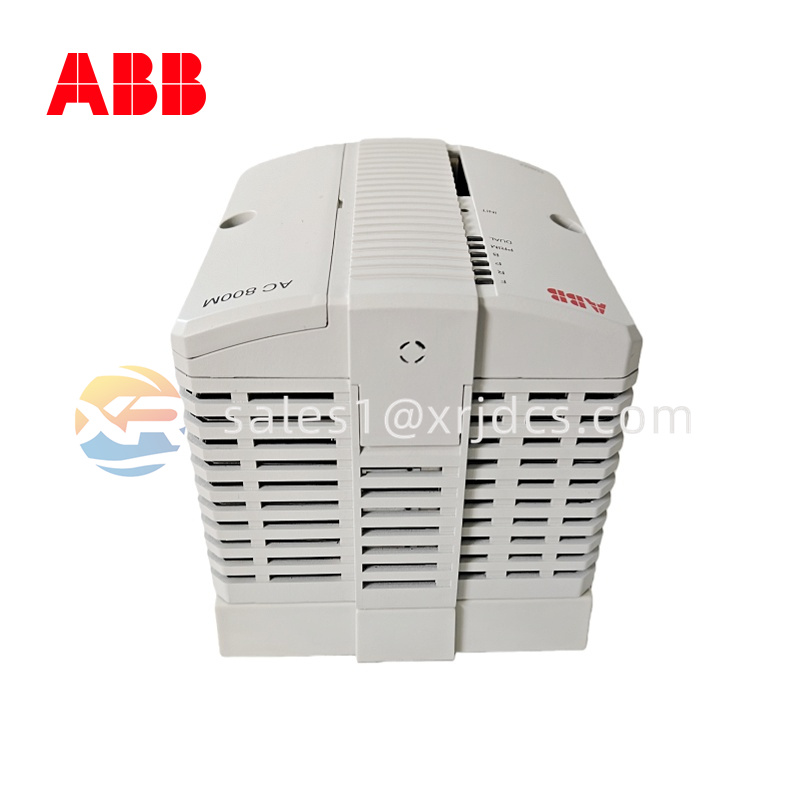ABB SPBRC400
The ABB SPBRC400 is a next-generation intelligent automatic transfer switch controller launched by the ABB Electrical Division, and it belongs to ABB’s Transferpact product series. Specifically designed for dual-power transfer applications in low-voltage distribution systems, this controller monitors the status of two power supplies (the primary power supply and the backup power supply). When a fault occurs in the primary power supply (such as power failure, undervoltage, overvoltage, or phase loss), it automatically switches the load circuit from the primary power supply to the backup power supply, ensuring the continuity and reliability of power supply for critical loads. Once the primary power supply returns to normal, it can automatically or manually switch the load back to the primary power supply.
Product Parameters
Product Model: SPBRC400
Manufacturer: ABB
Product Type: Automatic Transfer Switch Equipment Controller (ATSE Controller)
Rated Operating Voltage: 2× 220/380V AC (for monitoring two power supplies)
Power Frequency: 50/60 Hz
Power Consumption: < 5 VA
Measurement Accuracy: Voltage: ±1% F.S., Frequency: ±0.1 Hz
Transfer Delay: 0.1s ~ 30h (adjustable)
Return Delay: 0.1s ~ 30h (adjustable)
Engine Start Delay: 0.1s ~ 30h (adjustable)
Output Contacts: 2× transfer commands (primary/backup), Rating: 8A / 250V AC
Communication Interface: Optional modules: Modbus-RTU, Profibus-DP
Display Interface: Backlit LCD display with multi-language support
Protection Class: IP40 (higher after panel installation)
Operating Temperature: -25°C to +70°C
Installation Method: Panel-mounted installation (with opening dimensions)
Structure and Composition
The ABB SPBRC400 controller adopts a compact modular design, and its housing is made of high-strength, flame-retardant engineering plastics. The front panel integrates a large backlit LCD display and multiple navigation buttons, which are used for parameter setting, status checking, and manual operation. The internal structure mainly consists of the following core modules: a high-performance microprocessor unit (MCU), which serves as the "control brain" and is responsible for signal processing, logical judgment, and command issuance; a high-precision voltage sampling circuit, which monitors the voltage and frequency of the two power supplies in real time; a real-time clock (RTC) circuit, which manages various delay functions; a non-volatile memory (EEPROM), which stores set parameters and event records; an output relay drive circuit, which controls the closing and opening coils of external circuit breakers or contactors; and an optional communication module interface.
These components work together: the sampling circuit converts power grid signals into digital signals for analysis by the MCU; the MCU judges the power supply status based on preset logic and parameters; when the transfer conditions are met, it drives the corresponding output relay to act after a set delay, thereby controlling the switching mechanism. At the same time, all operations and fault events are recorded and reported through the display or communication interface.
Key Features and Advantages
Intelligent Management and Control: The ABB SPBRC400 provides a wealth of adjustable parameters (voltage thresholds, delay times, transfer modes) to adapt to various complex application scenarios. The automatic engine start signal output function can control generator sets, enabling a complete power backup solution.
High-Precision Monitoring and Protection: It monitors all parameters (phase voltage, line voltage, frequency) of the two power supplies in real time with high precision, and is equipped with comprehensive protection functions such as overvoltage, undervoltage, phase loss, and frequency abnormality. This ensures that power transfer is only performed under safe and reliable conditions.
Strong Communication and Integration Capabilities: It supports easy integration into upper-level monitoring systems through pluggable communication modules (Modbus, Profibus), enabling remote monitoring, parameter setting, and event record reading, which facilitates the construction of intelligent distribution systems.
User-Friendliness and Safety: The large LCD screen provides clear Chinese menus and status indicators, making operation intuitive and simple. It is equipped with electrical and mechanical interlocking logic to prevent incorrect paralleling of the two power supplies, ensuring operational safety.
Application Fields
The ABB SPBRC400 is widely used in low-voltage distribution sites that have strict requirements for power supply continuity and reliability. In public buildings, it is used to ensure the power supply for emergency lighting and critical equipment in hospital operating rooms, airport terminals, and stadiums. In data centers and communication rooms, it ensures that servers and network equipment never shut down. In the financial field, it is used for backup power control in bank data centers and stock exchanges. In the industrial sector, it is used for power transfer in automated production lines, DCS systems, and safety interlocking systems to prevent production interruptions and safety accidents. The ABB SPBRC400 is the last electrical line of defense to ensure the uninterrupted operation of critical loads, and its reliability is directly related to the continuity and safety of core businesses.
Installation and Maintenance
Pre-Installation Preparation
Before installing the ABB SPBRC400, it is essential to ensure that the two incoming power supplies and the load power supply are completely disconnected and properly isolated for safety. Verify that the rated voltage of the controller matches the grid voltage. Prepare appropriate installation openings and fasteners in accordance with the installation manual. Plan the wiring between the controller, circuit breakers, and generator set control terminals.
Maintenance Recommendations
Regularly check whether the power parameter readings on the ABB SPBRC400 display are consistent with the actual measured values.
Conduct functional tests: simulate a primary power failure to verify whether the controller can start the backup power supply and transfer the load correctly according to the preset logic.
Clean the controller’s ventilation openings and display screen.
Regularly check event records to identify potential power quality issues.
It is recommended that professional personnel conduct a comprehensive calibration and fastening inspection once a year.
Xingruijia focuses on providing ABB industrial automation full range product services and your intelligent control solution partner
If you would like to learn more about our products and services, please feel free to contact us at any time!
Sales Manager : Jinny
Email : sales1@xrjdcs.com
Whatsapp/Mobile:+86 15359273791
 Switzerland
Switzerland 



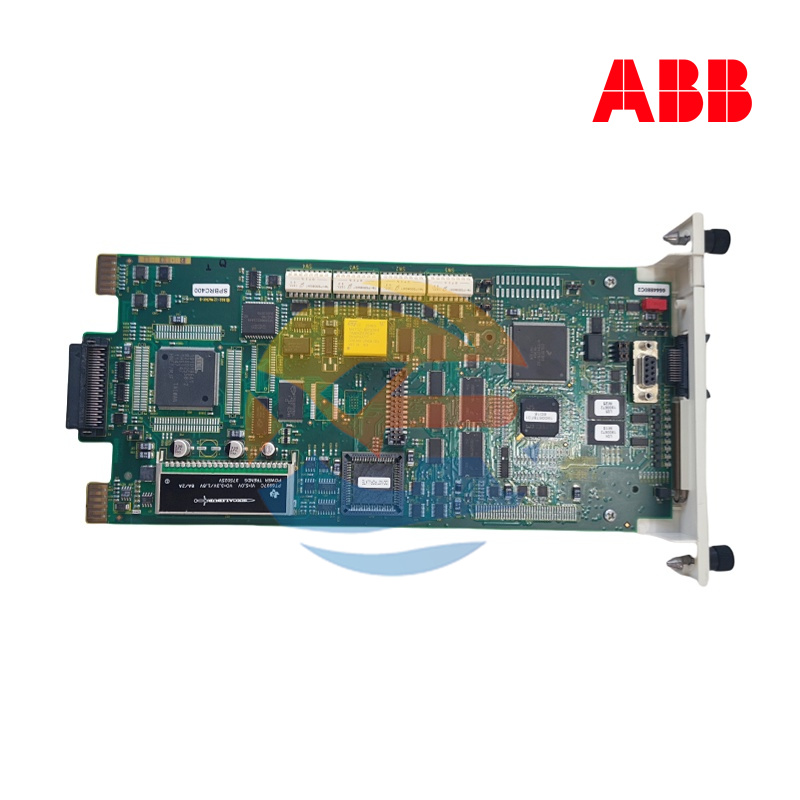
.jpg)
.jpg)
.jpg)
























